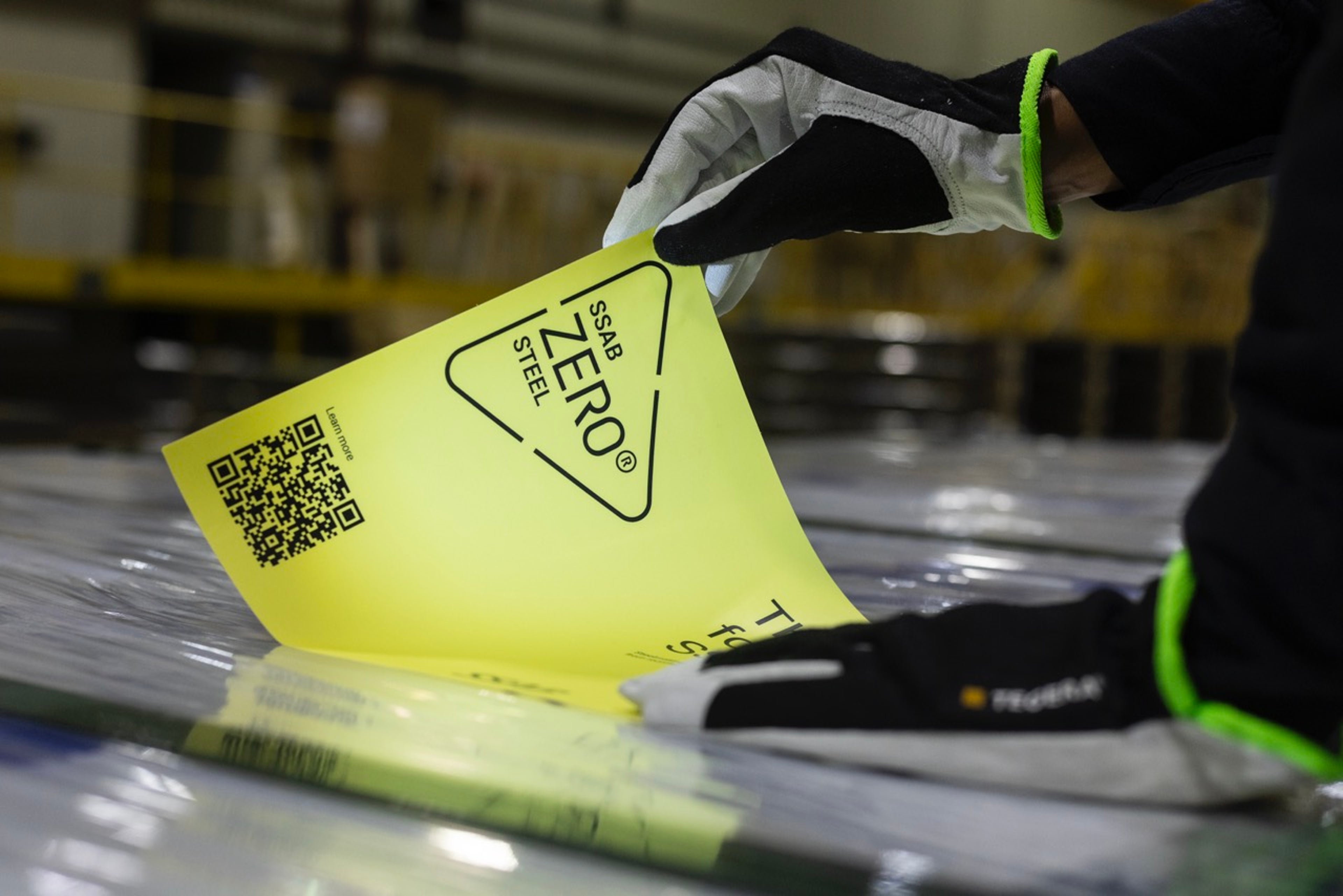
SSAB Zero® Steel
Explore sustainability hubNews
If we’re to achieve our ambition of net-zero greenhouse gas emissions by 2040, steel-related CO₂ emissions is an important area to tackle. Our new supply deal with SSAB does just that.
Sustainability

SSAB Zero® Steel
Explore sustainability hubOne of the biggest sources of CO₂ emissions in our production process is the steel we use to build our cars. That means reducing steel-related emissions is crucial if we want to achieve our sustainability ambitions.
We can now announce a big step forward on our road towards near-zero emissions steel. Volvo Cars has signed a new agreement with our long-standing partner and Swedish steel firm SSAB for the supply of high-quality, recycled and near zero-emissions steel starting from 2025.
In addition to buying recycled and near zero-emission steel, Volvo Cars progresses towards its circular ambitions by also selling scrap steel, helping Volvo Cars to keep materials at the highest value for the longest period of time in a closed loop system.
We are the first car maker to sign a supply agreement with SSAB for recycled, near zero-emissions steel. It will be used in selected components on our forthcoming, fully electric EX60 SUV, as well as other cars based on our next-generation SPA3 car architecture. Crucially, recycled steel meets our same safety-related requirements we have for primary steel, such as of strength and durability.
“Steel on average represents 25 per cent of all material-related emissions for a new Volvo car,” says Francesca Gamboni, our chief supply chain and manufacturing officer. “We work towards achieving net-zero greenhouse gas emissions by 2040, and cutting steel-related emissions really has the potential to move the needle.”
"We work towards achieving net-zero greenhouse gas emissions by 2040"
| Francesca Gamboni, chief supply chain and manufacturing officer
A significant improvement
SSAB’s recycled steel represents a significant improvement over using traditional primary steel. For example, it does not use the blast furnace that is traditionally used for producing primary steel. This eliminates the need for additional mining and consumption of iron ore and coal in the process. Instead, it uses a so-called electric arc furnace.
SSAB’s closed loop system recycles scrap steel, significantly reducing CO₂ emissions and keeping materials and natural resources in use for longer. Compared with traditionally produced steel in Europe, SSAB’s recycled steel generates almost 100 per cent less CO₂ emissions for every tonne of steel and is made with around 90 per cent recycled content.
“Steel is an important material to ensure the safety, strength and durability of our products and traditionally it’s a significant contributor to our carbon emissions,” says Francesca. “By signing this agreement, we have taken an important step in reducing the impact on the environment and increase the awareness for using recycled materials within our supplier network.”
A comprehensive climate plan
Our ambition to achieve net-zero greenhouse gas emissions by 2040 is part of our comprehensive climate action plan, one of the most ambitious in the auto industry. We are committed to a fully electric future and already by 2030, we aim for 90 to 100 per cent of our global sales volumes to consist of electrified cars, meaning a mix of both fully electric and plug-in hybrid models.
By 2030, we also aim to have reduced CO₂ emissions per car by 65-75 per cent compared to a 2018 baseline. One way to make this happen is by working with our suppliers to continuously reduce CO₂ emissions from materials across our value chain – and today’s agreement with SSAB is a perfect example of that strategy.
The agreement also supports our circularity ambitions. We aim to use an average of 30 per cent recycled content across our fleet by 2030, and for new car models released from 2030 to contain at least 35 per cent recycled or bio-based content.